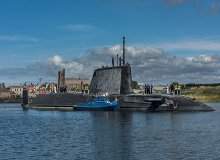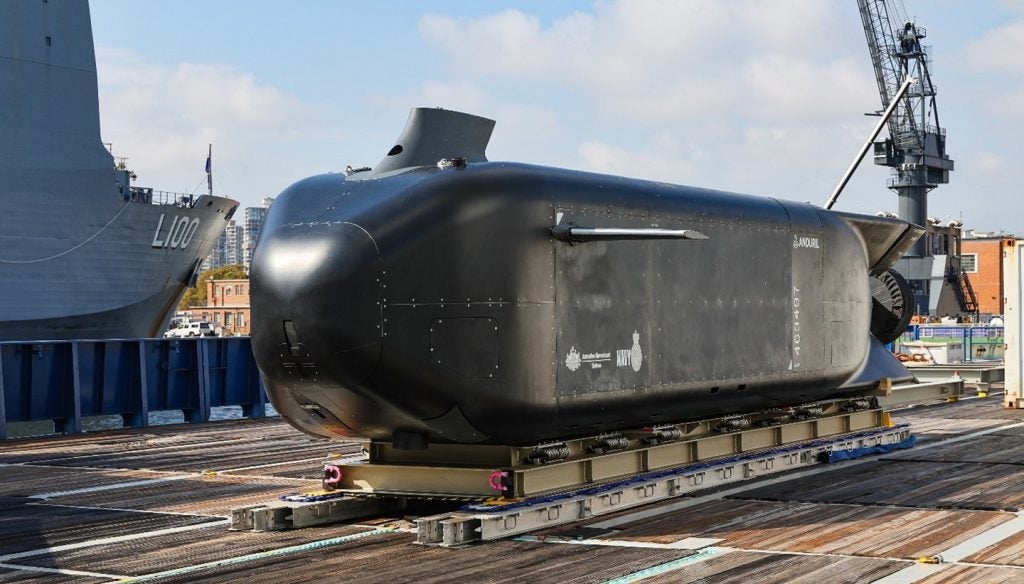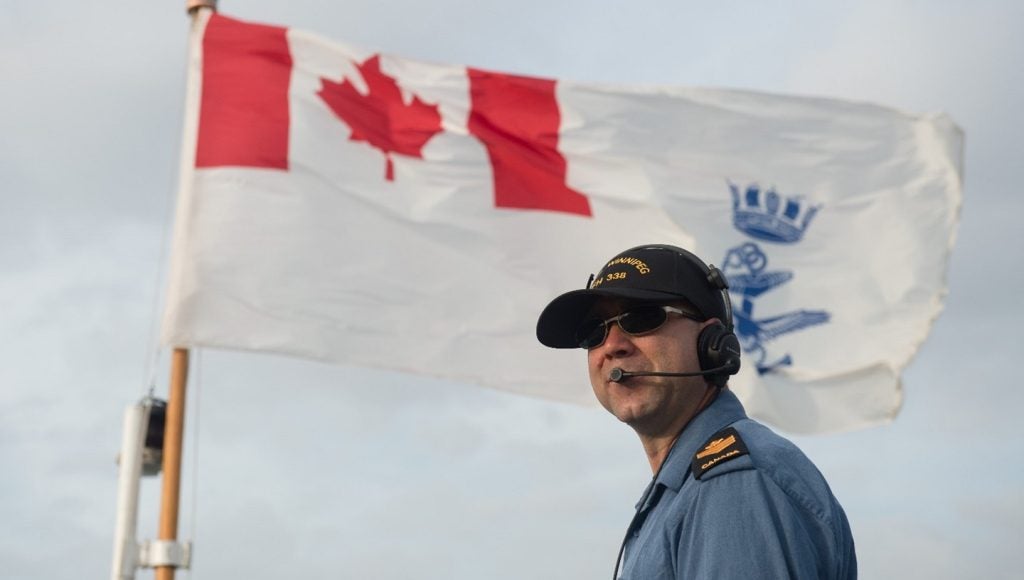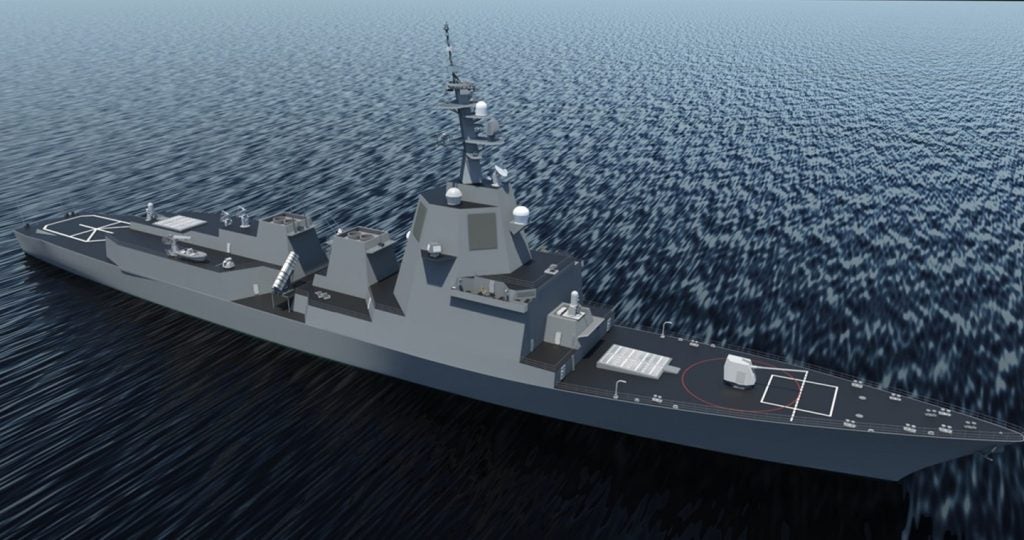

HMS Queen Elizabeth crew switch on its radar for first time

The crew of the UK Royal Navy’s Elizabeth-class (QE) aircraft carrier, HMS Queen Elizabeth, switched on the vessel’s S1850M radar for the first time.
The flashing up of the long-range radar was part of ongoing preparations to ready the warship for sea next year.
Designed to provide a three dimensional and long-range picture, the radar can track up to 1,000 contacts up to a range of 400km from the vessel.
During the restricted operation, the radar compiled an air picture, tracking aircraft on approach to Glasgow airport, which is 40 miles to the west of Rosyth, as well as transatlantic traffic to and from the rest of the UK.
How well do you really know your competitors?
Access the most comprehensive Company Profiles on the market, powered by GlobalData. Save hours of research. Gain competitive edge.

Thank you!
Your download email will arrive shortly
Not ready to buy yet? Download a free sample
We are confident about the unique quality of our Company Profiles. However, we want you to make the most beneficial decision for your business, so we offer a free sample that you can download by submitting the below form
By GlobalDataSee Also:
France and Russia terminate Mistral-class aircraft carrier contract
France and Russia reportedly agreed to terminate a €1.2bn ($1.3bn) contract to deliver two Mistral-class aircraft carriers for the Russian Navy.
According to a joint statement from both countries, France will fully reimburse the money that was already paid for the vessels and also return Russian equipment that had been installed on the vessels.
A statement from the Kremlin was cited by The Wall Street Journal that said both countries came to a mutual understanding regarding the compensation of the Russian side for funds paid under the contract.
In November last year, France suspended the delivery of the first Mistral-class aircraft carrier, Vladivostok, amid pressure from its allies over Ukraine crisis.
Australia to invest $65bn on naval shipbuilding projects over 20 years
Australia announced plans to invest A$89bn ($65.5bn) on frigates and submarines over the next 20 years, in a bid to strengthen the domestic naval shipbuilding industry and national security.
As part of the plans, Prime Minister Tony Abbott announced an investment of A$40bn ($29.44bn) into surface naval shipbuilding.
The surface warships projects will see the construction of SEA5000 Future Frigate and the SEA1180 offshore patrol vessels.
In addition, approximately A$50bn ($36.80bn) will be provided for the stealth submarine programme.
US approves $1.5bn Aegis combat system sale to Japan
The US State Department approved a possible foreign military sale worth approximately $1.5bn to Japan for DDG 7 and 8 Aegis combat system (ACS), underwater weapon system (UWS), and cooperative engagement capability (CEC).
Under this proposed deal, Japan is expected to receive two ship sets of the MK 7 Aegis weapon system, AN / SQQ-89A (v) 15J UWS, and CEC.
The new deliveries will support the construction of a new ship class of DDGs and a new propulsion system. The ACS and associated support will be delivered over a six to seven-year period.
GE to power UK Royal Navy’s next-generation Type 26 combat ships
General Electric (GE) Marine received a contract to deliver its electrical power and propulsion to the next-generation Type 26 Global Combat Ships (GCS) of the UK Royal Navy.
Under this order, GE will deliver its advanced and reliable electric power and propulsion solution that meets various operational requirements.
The Type 26 multi-mission warships, which will be constructed by BAE Systems, are being designed to conduct multinational missions, including complex combat operations, counter-piracy and humanitarian, and disaster relief work.
Construction of the first vessel is scheduled to begin in 2016 and will be commissioned after 2020.
Australian Navy’s Nuship Adelaide completes final sea trials prior to delivery

The Royal Australian Navy’s (RAN) second landing helicopter dock (LHD) ship, Nuship Adelaide, successfully completed second and final sea trials in Port Phillip Bay.
The 27,800t vessel will now return to BAE Systems’ Williamstown shipyard to be prepared for delivery to the Department of Defence’s Capability Acquisition and Sustainment Group (CASG) and the RAN.
BAE Systems Australia Maritime director Bill Saltzer said: "As prime contractor for LHD In Service Support, our team of experienced engineers, technicians and logisticians in both Sydney and Williamstown will continue to be the key partner to the CASG and RAN in managing the availability of these two ships at Garden Island, Sydney.
"Our LHD team is now focused on the final elements of work in preparing NUSHIP Adelaide for delivery. Some of the team members on the LHD build programme will then transition to the support services group."
US Navy begins initial integration testing of LRASM for F / A-18E / F Super Hornet
The US Navy started initial integration testing of its long-range anti-ship missile (LRASM) onto the F / A-18E / F Super Hornet at Patuxent River’s Air Test and Evaluation Squadron (VX) 23 facility.
As part of this development, the flight test team performed missile load and fit checks with the support of a mass simulator vehicle, which is designed to emulate LRASM.
The integration testing is being carried out in preparation for the first phase of airworthiness testing with the F / A-18E / F, scheduled to begin later this month.
UK Royal Navy’s HMS Artful begins sea trials
The UK Royal Navy’s third Astute-class submarine HMS Artful began its sea trials, marking its maiden voyage after completing construction at BAE Systems shipyard in Barrow-in-Furness in Cumbria.
The 97m-long, 7,400t nuclear-powered submarine is expected to join the Royal Navy fleet around the end of this year.
BAE Systems Submarines managing director Tony Johns said: "Seeing Artful exit from Barrow today is the culmination of a huge amount of hard work from everyone at BAE Systems, our partners and the hundreds of businesses in our supply chain network.
"Everyone involved in the Astute programme should feel immensely proud of their achievements as the third in class Astute submarine reaches this significant milestone."
USS George Washington performs record-breaking fuelling-at-sea with USS Chafee

The US Navy’s Nimitz-class aircraft carrier USS George Washington (CVN 73) successfully conducted fuelling-at-sea (FAS) with the Arleigh Burke-class guided-missile destroyer USS Chafee (DDG 90).
The latest FAS saw the delivery of 205,292gal of JP-5, which broke the record of approximately 33,000gal delivered by USS Abraham Lincoln to USS Cape St George (CG 71) in 2010.
George Washington fuels boatswain chief warrant officer 2 William Dinsmore said: "The typical amount of fuel passed during a normal evolution is between five and ten thousand gallons.
"In the past we have proved that we could refuel them (cruisers and destroyers) if we needed to, during this evolution we actually refuelled them."
US Marine Corps’ F-35B achieves initial operational capability

The US Marine Corps’ F-35B Lightning II aircraft joint strike fighter (JSF) reached initial operational capability, after completing a five-day operational readiness inspection (ORI).
With the new development, Yuma-based Marine Fighter Attack Squadron 121 (VMFA-121) has become the first squadron to be operational with an F-35 variant.
Marine Corps commandant general Joseph Dunford said: "VMFA-121 has ten aircraft in the Block 2B configuration with the requisite performance envelope and weapons clearances, to include the training, sustainment capabilities, and infrastructure to deploy to an austere site or a ship.
"It is capable of conducting close air support, offensive and defensive counter air, air interdiction, assault support escort, and armed reconnaissance, as part of a Marine Air Ground Task Force, or in support of the Joint Force."








